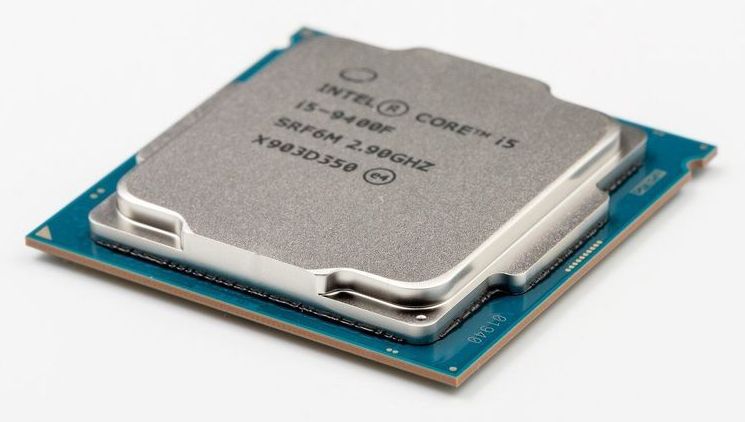Tunde Ajaja Former Minister of Finance, Dr Ngozi Okonjo-Iweala, has said in all the positions she has occupied, serving as Nigeria’s Minister of Finance remains one of her toughest jobs so far. O…
Category: finance – Page 102
A bug in a protocol used by virtually all Internet of Things devices exposes millions of users to potential attack, a researcher reported Monday. The fault centers on the Universal Plug and Play protocol, a 12-year-old implementation that simplifies connections among network devices such as computers, printers, mobile devices and Wi-Fi access points.
Billions of devices are theoretically vulnerable, the report stated, but only those with UPnP activated currently face risk of attack.
Turkish security engineer Yunus Çadirci uncovered the UPnP bug, named CallStranger, that could be exploited to gain access to any smart device such as security cameras, printers and routers that are connected to the Internet. Once access is gained, malicious code can be sent through network firewalls and other security defenses and reach internal data banks.
A pair of new security threats to Intel-based computer systems have been revealed. The beleaguered semiconductor chip manufacturer has faced a seemingly endless series of vulnerabilities over the past two years.
Although no known attacks have occurred, two teams of researchers have confirmed vulnerabilities in what is supposed to be the safest neighborhood within Intel processor architecture.
One attack, dubbed SGAxe, can gain entry into Intel’s Software Guard eXtensions (SGX) services that were specifically designed to protect critical data in the event of massive assault elsewhere in a system. A hacker theoretically can steal cryptographic keys stored in SGX and use them to break security measures protecting sensitive data such as financial records, copyrighted content or passwords.
WASHINGTON — For the second time in less than 18 months, SpaceX has abandoned plans to build a manufacturing facility at the Port of Los Angeles for its next-generation Starship launch vehicle.
In a March 27 letter obtained by SpaceNews, SpaceX notified the Port of Los Angeles that it was terminating a lease approved just a month earlier for a parcel of land at the port. News of the lease termination was first reported by the Los Angeles Times.
The letter, signed by Bret Johnsen, SpaceX’s chief financial officer, served as a 45-day notice of SpaceX’s intent to terminate the lease, making the effective end date of the lease May 11. The letter did not explain why the company was terminating the lease.
IM’s issue # 5
Posted in biotech/medical, finance, life extension
Immortalists magazine issue no. 5 is out smile
It is predicted that a pandemic of psychological and societal injuries is to come as we face financial and emotional crises across the globe.
As the pandemic’s economic toll grows around the world, some experts fear it could harm science for decades by putting many thousands of researchers out of work and forcing nations to slash funding as they rebuild societies. Others say the pandemic could highlight the importance of science and spur long-term support, especially for basic research, much as the Second World War did.
Financial crises could spell trouble for science budgets but spending could surge in some countries: part 2 in a series on science after the pandemic.
Researchers in Italy have melded the emerging science of convolutional neural networks (CNNs) with deep learning — a discipline within artificial intelligence — to achieve a system of market forecasting with the potential for greater gains and fewer losses than previous attempts to use AI methods to manage stock portfolios. The team, led by Prof. Silvio Barra at the University of Cagliari, published their findings on IEEE/CAA Journal of Automatica Sinica.
The University of Cagliari-based team set out to create an AI-managed “buy and hold” (B&H) strategy — a system of deciding whether to take one of three possible actions — a long action (buying a stock and selling it before the market closes), a short action (selling a stock, then buying it back before the market closes), and a hold (deciding not to invest in a stock that day). At the heart of their proposed system is an automated cycle of analyzing layered images generated from current and past market data. Older B&H systems based their decisions on machine learning, a discipline that leans heavily on predictions based on past performance.
By letting their proposed network analyze current data layered over past data, they are taking market forecasting a step further, allowing for a type of learning that more closely mirrors the intuition of a seasoned investor rather than a robot. Their proposed network can adjust its buy/sell thresholds based on what is happening both in the present moment and the past. Taking into account present-day factors increases the yield over both random guessing and trading algorithms not capable of real-time learning.
The fast and efficient generation of random numbers has long been an important challenge. For centuries, games of chance have relied on the roll of a die, the flip of a coin, or the shuffling of cards to bring some randomness into the proceedings. In the second half of the 20th century, computers started taking over that role, for applications in cryptography, statistics, and artificial intelligence, as well as for various simulations—climatic, epidemiological, financial, and so forth.
https://facebook.com/LongevityFB https://instagram.com/longevityyy https://twitter.com/Longevityyyyy https://linkedin.com/company/longevityy
- Please also subscribe and hit the notification bell and click “all” on these YouTube channels:
https://youtube.com/Transhumania
https://youtube.com/BrentNally
https://youtube.com/EternalLifeFan
https://youtube.com/MaxEternalLife
https://youtube.com/LifespanIO
https://youtube.com/LifeXTenShow
https://youtube.com/BitcoinComOfficialChannel
https://youtube.com/RogerVer
https://youtube.com/RichardHeart
https://youtube.com/sciVive
Follow Peter Voss on social media:
Tweets by peterevoss
https://linkedin.com/in/vosspeter
https://facebook.com/petervoss
https://medium.com/@petervoss
Check out projects Peter focuses on:
https://agiinnovations.com
http://optimal.org/voss.html
SHOW NOTES
Moderna’s stock price skyrocketed as much as 30% on Monday after the biotech company announced promising early results for its coronavirus vaccine. As ordinary investors piled in, two insiders were quietly heading for the exits.
Moderna’s chief financial officer and chief medical officer executed options and sold nearly $30 million of shares combined on Monday and Tuesday, SEC filings reviewed by CNN Business show.
The sales occurred after Moderna (MRNA) excited Wall Street before markets opened Monday by announcing encouraging vaccine trial results. Moderna’s market value swelled to $29 billion — even though the company has no marketed products.









